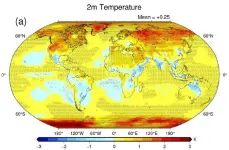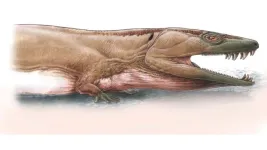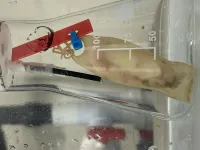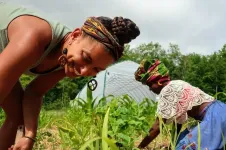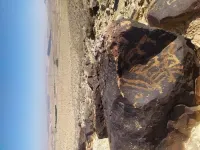(Press-News.org)
An international panel of experts led by the Barcelona Institute for Global Health (ISGlobal), a centre supported by the “la Caixa” Foundation, under the umbrella of the Alzheimer's Association International Society to Advance Alzheimer's Research and Treatment, has produced a consensus statement on sex and gender disparities in resilience to Alzheimer's disease and call for incorporating these differences in future research. The work has been published in Alzheimer's & Dementia: The Journal of the Alzheimer's Association.
Women make up the majority of people with Alzheimer's disease and have twice the lifetime risk. The prevalence of protective and risk factors, as well as the burden of Alzheimer’s disease pathologies and related conditions such as cerebrovascular disease, differ by sex and gender because of biological factors (e.g. genetic risk) and socially constructed factors (e.g. education and lifestyle).
"Assessing how sex and gender interact is crucial to understanding the mechanisms that maintain cognitive function and reduce the accumulation of pathologies in ageing and Alzheimer's disease, i.e. resilience and resistance factors," says Eider Arenaza-Urquijo, ISGlobal researcher, first author of the study and President of the Reserve, Resilience and Protective Factors Group of the Alzheimer's Association.
Resistance and resilience to Alzheimer’s disease in men and women
Based on a review of a large body of literature, the team identified sex and gender differences in dementia risk and identified a gap in the understanding of specific risk and resilience pathways.
While women tend to have an initial cognitive advantage, they decline faster than men as the disease progresses. This may be due to differential development of pathologies, known as resistance to Alzheimer’s disease, or different ability to maintain normal functioning over time and cope with pathology once this is present, known as cognitive resilience to Alzheimer's disease.
In fact, women initially show greater resilience, coping better with brain pathology and atrophy and maintaining cognitive function. The greater initial resilience in women is supported by animal research showing a protective role of the X-Chromosome in Alzheimer’s disease (females typically have two X chromosomes, while males have one). However, this initial resilience fades away as they progress towards a clinical diagnosis of mild cognitive impairment and Alzheimer’s disease, when they show greater vulnerability. Indeed, studies suggest that women are more likely to have an abnormal build-up of tau protein in the brain and show a higher burden of vascular pathologies, particularly after the menopause.
The authors propose various mechanisms explaining the difference in risk and resilience between women and men, including a higher prevalence of physical inactivity and affective disorders in women, but also biological factors. In this regard, genetic evidence suggests that resilience might be associated with immune pathways in females and cardiovascular pathways in men.
Addressing modifiable factors
According to the research team, studies of resilience in Alzheimer's disease have mainly focused on individual behaviour, without taking into account how social and cultural factors, such as gender, influence behaviour and therefore risk and resilience. Importantly, differences in cognitive function between men and women may be decreasing as gender inequalities also decrease due to more opportunities for women in education, workforce participation, and improvements in their economic status and living conditions. "Protective factors, such as education, may have different effects in men and women. We need to understand the complexity of interactions between biological and social factors to understand resilience to Alzheimer’s disease", argues Arenaza-Urquijo.
For this reason, the authors call for a sex- and gender-sensitive approach to resilience to better understand the complex interplay of biological and social determinants. "Focusing more on the differential effects of modifiable factors will help to determine whether a particular factor has a greater impact on cognitive or brain resilience in men or women", remarks Arenaza-Urquijo.
Recommendations for future research
To improve our understanding of how sex and gender affect cognitive resilience to ageing and Alzheimer's disease, the researchers recommend several directions for future studies. First, they stress the need to explore how sex and gender factors interact across cultures, taking into account the demographic, genetic, social and clinical differences that influence dementia risk.
They point out that sex/gender differences in brain characteristics, such as brain connectivity, remain understudied as resilience factors for Alzheimer’s disease that may minimise the impact of pathologies on cognition.
The authors also argue that publishing negative results is crucial to avoid bias and that all studies should include sex-disaggregated results. Finally, they point out the importance of considering sex and gender in a non-binary way, and of including LGTBIQ+ populations, who are often underrepresented and face a higher burden of chronic disease.
Reference
Arenaza-Urquijo, EM., Boyle, R., Casaletto, K., Anstery, K., Vila-Castelar, C., et al. Sex and gender differences in cognitive resilience to ageing and Alzheimer’s disease. Alzheimer's & Dementia. Doi: 10.1002/alz.13844
END
One of the key metrics for climate modelling is radiative forcing. Most climate models, including the general circulation models (GCMs), focus on the effects of different atmospheric factors on radiative forcing. However, there are still large uncertainties in satellite observations and multi-model simulations associated with some atmospheric factors. Among them, clouds are a known source of uncertainty in GCMs, leading to radiative biases. However, another possible source of radiative uncertainty is associated with precipitation.
In principle, precipitating particles affect radiative forcing by disrupting incoming shortwave and outgoing longwave radiations. ...
Insilico Medicine(“Insilico”), a clinical-stage generative artificial intelligence (AI)-driven drug discovery company, has successfully delivered the second preclinical candidate compound (PCC) in its collaboration with Fosun Pharma in June 2024, a potential innovative therapeutic using synthetic lethal strategy for the treatment of solid tumors. Insilico expects to submit the pre-IND application for this candidate with the CDE in 2024 Q4.
When initiating the collaboration, Fosun Pharma proposed four targets of interest, and the target of the PCC nominated in this program is one of them and plays a critical role in DNA damage repair mechanisms. Insilico’s ...
After three years of meticulous study, an international team of researchers has announced the discovery of a fossilised giant basal tetrapod in Namibia's arid heartland in Nature. A basal tetrapod is an early four-legged vertebrate with fingers and toes, which lived during the transition from water to land. These ancient carnivores are among the earliest ancestors of all modern animals. This nearly complete 3-meter-long skeleton of an adult, unearthed in the Ugab River valley in Damaraland, is the largest ever discovered. This discovery is significant because it challenges previous assumptions that these early four-legged vertebrates, which lived during ...
An ongoing research project into the impact of offshore windfarm electromagnetic fields on shark development reveals that the alternating electric currents produced by underwater windfarm cables seems not to disrupt the growth or survival of sharks.
Offshore windfarms are one of the most common marine renewable energy (MRE) producers, and are seen as a pivotal technology in the global transition towards renewable energy and away from fossil fuels that contribute to climate change.
However, their proliferation in marine environments raises new questions about their impacts on wildlife. Energy operators and ...
To perform quantum computations, quantum bits (qubits) must be cooled down to temperatures in the millikelvin range (close to -273 Celsius), to slow down atomic motion and minimize noise. However, the electronics used to manage these quantum circuits generate heat, which is difficult to remove at such low temperatures. Most current technologies must therefore separate quantum circuits from their electronic components, causing noise and inefficiencies that hinder the realization of larger quantum systems beyond the lab.
Researchers in EPFL’s Laboratory of ...
Microbes that are used for health, agricultural, or other applications need to be able to withstand extreme conditions, and ideally the manufacturing processes used to make tablets for long-term storage. MIT researchers have now developed a new way to make microbes hardy enough to withstand these extreme conditions.
Their method involves mixing bacteria with food and drug additives from a list of compounds that the FDA classifies as “generally regarded as safe.” The researchers identified formulations that help to stabilize several different types ...
Agroecology—a science, practice, and movement which seeks social, political, economic, and environmental sustainability in the global food system—is gaining momentum in the U.S., according to a new Dartmouth-led commentary in Nature Food. As the co-authors report, the approach requires coordination between scientists, farmers, and activists.
"When it comes to sustainable food and agriculture, people in the U.S. tend to be more familiar with organic farming, the production of food without synthetic inputs, and regenerative agriculture, which primarily strives to restore soil health," says lead author Theresa Ong, an assistant professor of environmental studies ...
A mysterious remnant from a rare type of supernova recorded in 1181 has been explained for the first time. Two white dwarf stars collided, creating a temporary “guest star,” now labeled supernova (SN) 1181, which was recorded in historical documents in Japan and elsewhere in Asia. However, after the star dimmed, its location and structure remained a mystery until a team pinpointed its location in 2021. Now, through computer modeling and observational analysis, researchers have recreated the structure of the remnant white dwarf, a rare occurrence, explaining its ...
The Negev desert of southern Israel is renowned for its unique rock art. Since at least the third millennium BCE, the hunters, shepherds, and merchants who roamed the Negev have left thousands of carvings (‘petroglyphs’) on the rocks. These figures are mostly cut into ‘desert varnish’: a thin black coating on limestone rock, which forms naturally. Many represent animals such as ibexes, goats, horses, donkeys, and domestic camels, but abstract forms also occur.
Now, a study published in Frontiers in Fungal ...
Pseudomonas aeruginosa – an environmental bacteria that can cause devastating multidrug-resistant infections, particularly in people with underlying lung conditions – evolved rapidly and then spread globally over the last 200 years, probably driven by changes in human behaviour, a new study has found.
P. aeruginosa is responsible for over 500,000 deaths per year around the world, of which over 300,000 are associated with antimicrobial resistance (AMR). People with conditions such as COPD (smoking-related lung damage), cystic fibrosis (CF), and non-CF bronchiectasis, are particularly susceptible.
How P. aeruginosa evolved from an environmental organism into a ...
